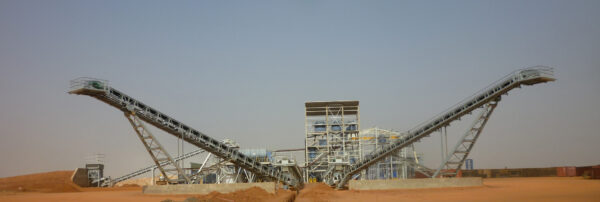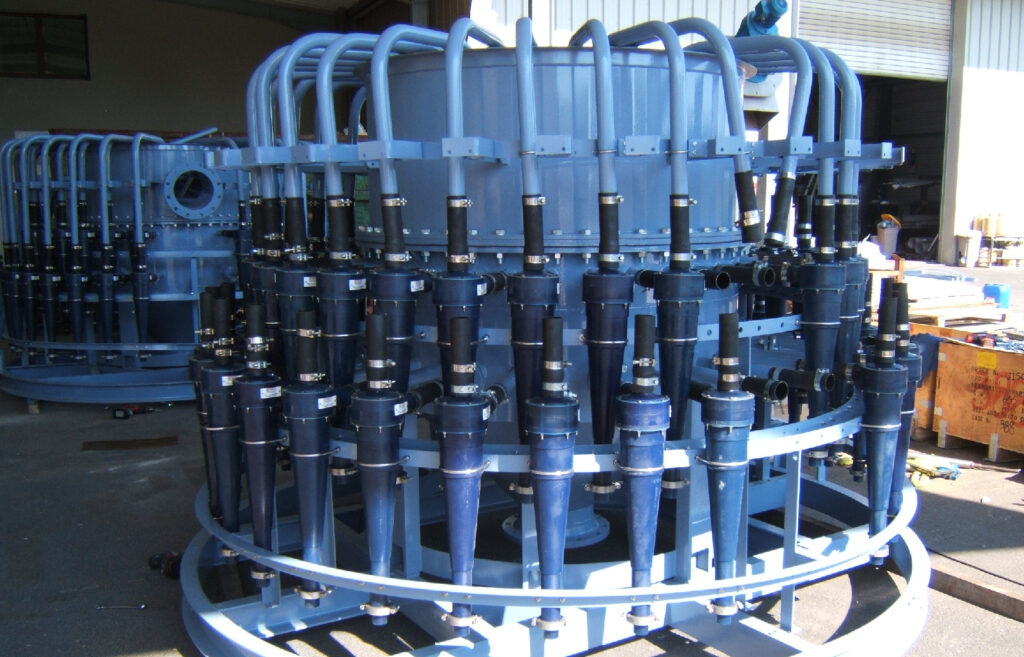
THE PROJECT
Let’s go to China for bauxite processing and alumina classification for our customer SHANGDONG XINFA HUAYU one of the leading players in the aluminum market!
Following an initial project in 2004, a new call for tenders was launched in 2006 to complete the equipment already delivered for hydrocycling classification. The alumina refinery has a production capacity of around 4 million tonnes a year and supplies all the product for the production of aluminum ingots. Hydrocyclone batteries must perform 3 functions: classification of alumina trihydrate, separation of decomposed liquor and separation of stabilization liquor. The addition of hydrocyclones allows the production line to be de-bottlenecked, thereby increasing alumina production.
NEYRTEC MINERAL SOLUTION
To meet the customer’s hydraulic classification needs, NEYRTEC MINERAL proposed the following in 2004 and 2006
Supply of a hydrocylon assembly comprising :
- 2 batteries of 50 HYDROCYCLONES TYPE HC 100 (2004)
- 3 batteries of 50 HYDROCYCLONES TYPE HC 100+(2004)
- 2 batteries of 60 HYDROCYCLONES TYPE HC 100 (2006)
- 1 battery of 6 HYDROCYCLONES TYPE TA 500 (2006)
PERFORMANCES
All hydrocyclone batteries were designed and manufactured by NEYRTEC MINERAL, which also took care of on-site assembly. Hydrocyclone arrays at various points in the process ensure:
- The classification of alumina tri-hydrate, i.e. the elimination of particles smaller than 45 µm (microns) while limiting the use of dilution liquor necessary for good classification,
- Separation of decomposed liquor: a battery of hydrocyclones (HC 100) treats the filtrates to recover the hydrate, thus reducing net production losses and producing a reusable dilution liquor.
- Stabilizer liquor separation with HC 100 hydrocyclones (Ø 100 mm)

FIND OUT MORE ABOUT BAUXITE AND ALUMINA
Bauxite is a sedimentary rock rich in alumina, mainly used for aluminum production. Bauxite is processed in several stages, turning the rock into alumina and then aluminum: a light, strong and versatile metal widely used in industry.
Bauxite processing begins with mining. Once mined, the bauxite is transported to processing plants, where it is washed and crushed to transform it into bauxite sludge. This sludge is then sent to settling tanks, where the alumina particles are separated from the other elements present in the sludge. The bauxite sludge is then heated in calcination tanks to produce alumina. This step transforms the aluminum hydroxide present in the sludge into aluminum oxide, or alumina. The alumina is then purified and crystallized in precipitation tanks, to produce high-quality alumina crystals.
The alumina crystals are then dried and calcined to produce aluminum oxide, the raw material used to produce aluminum. This process is carried out in aluminum production plants, where aluminum oxide is melted in high-temperature pots, then electrolyzed to produce aluminum.
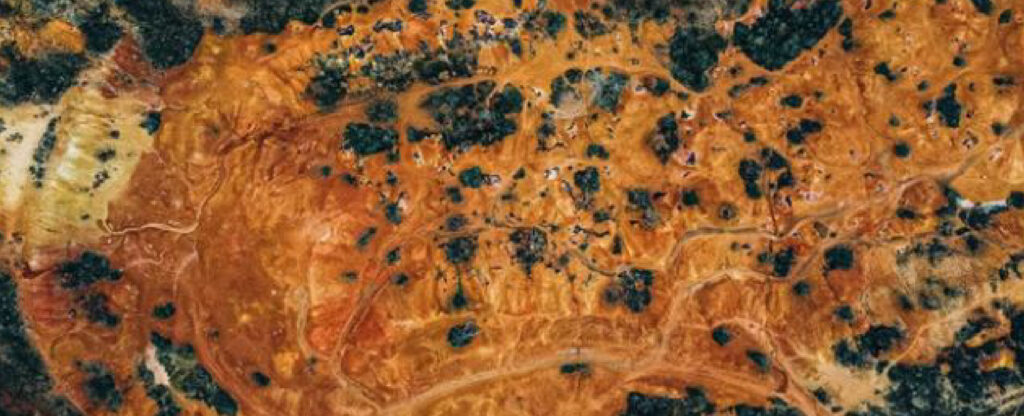
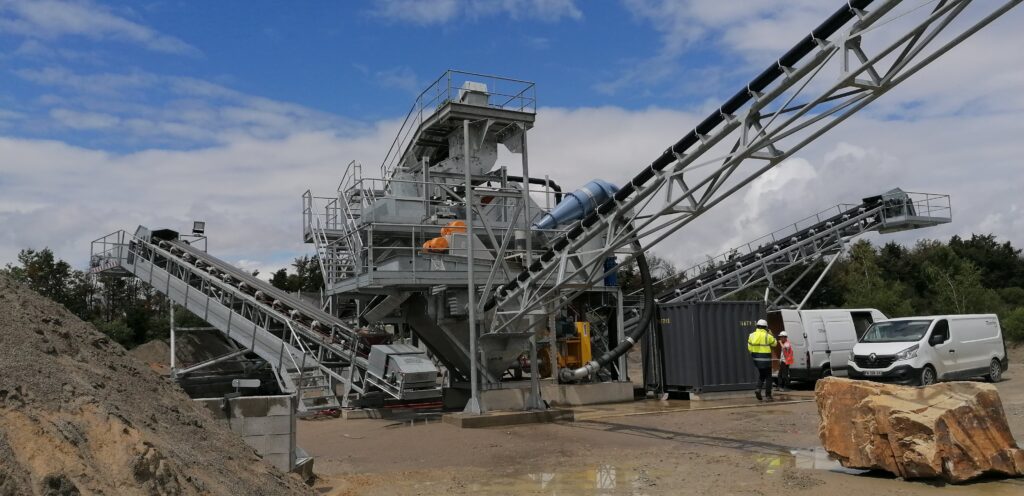
NEYRTEC MINERAL EQUIPMENT
Customized equipment for tailored solutions. NEYRTEC MINERAL offers a complete range of reliable, high-performance equipment.
CASE STUDIES
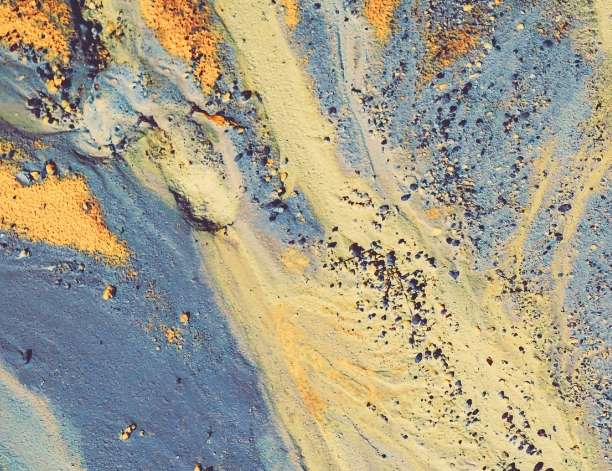
WITH YOU TO SUCCEED
Whether you’re in France or abroad, our NEYRTEC MINERAL team is ready to listen, discuss and support you in the realization of your projects. Our expertise and experience guarantee you with a tailored answer.








